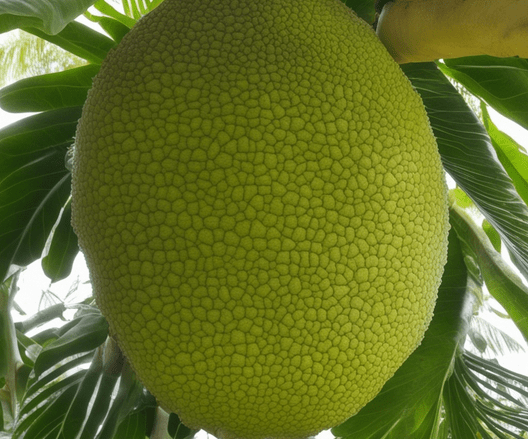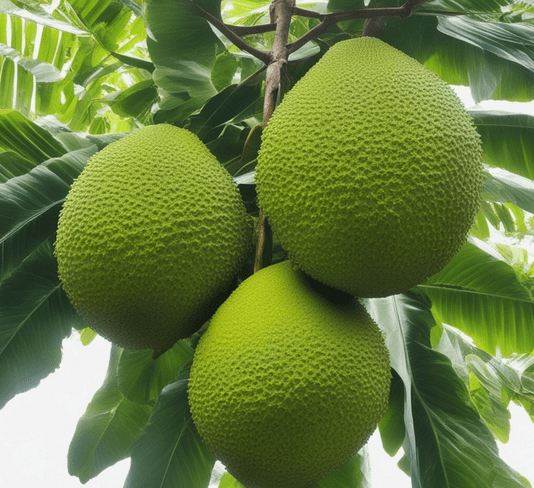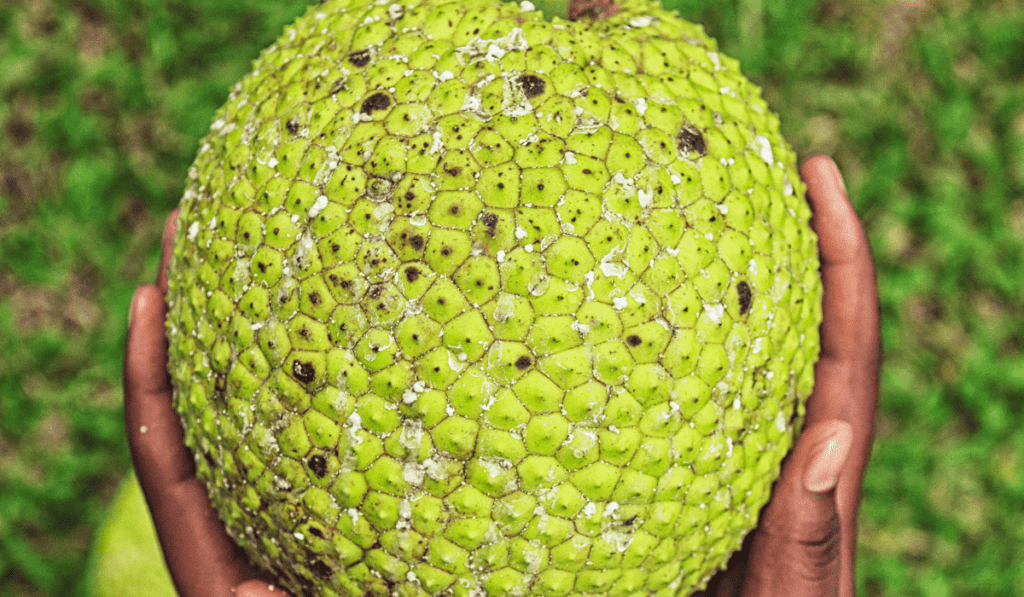Shield your breadfruit trees from winter chills with a guide on “Breadfruit Winter Protection.” Discover the secrets of nurturing these tropical wonders in colder seasons. This guide simplifies the protection process, ensuring your breadfruit trees stay cozy and healthy. Ready to safeguard your breadfruit oasis? Let’s explore the essential steps for winter protection together!
Nutritional Table
Certainly, here’s a nutritional table for 100 grams of raw breadfruit:
| Nutrient | Amount per 100g |
| Calories | 103 kcal |
| Carbohydrates | 27.1 grams |
| – Dietary Fiber | 4.9 grams |
| – Sugars | 4.9 grams |
| Protein | 1.07 grams |
| Fat | 0.2 grams |
| – Saturated Fat | 0.05 grams |
| Vitamins and Minerals | Amount per 100g |
| – Vitamin C | 29 mg |
| – Vitamin A | 3 IU |
| – Potassium | 490 mg |
| – Magnesium | 37 mg |
| – Calcium | 17 mg |
| – Iron | 0.54 mg |
Breadfruit is a starchy tropical fruit that is commonly used as a vegetable in cooking. It is a good source of carbohydrates, including dietary fiber. It also provides a small amount of protein and is low in fat. Breadfruit contains essential vitamins and minerals, with notable amounts of vitamin C and potassium.
Please note that the nutritional values provided are approximate and can vary based on factors such as the fruit’s ripeness and variety. Cooking methods, such as boiling or roasting, can also impact the nutritional content of breadfruit.
Understanding Breadfruit Trees
Before we dive into winter care, it’s essential to familiarize ourselves with breadfruit trees:
Tropical Origin:
Breadfruit trees are native to tropical regions and prefer warm temperatures year-round.
Distinct Foliage:
These trees feature large, deeply lobed leaves that provide shade and a lush canopy in their natural habitat.
Can You Grow Breadfruit in Winter?
The straightforward answer is that breadfruit trees are sensitive to cold temperatures, and growing them in winter can be challenging, especially in regions with freezing or near-freezing conditions. However, with proper care and some adjustments, you can attempt to protect your breadfruit tree during the cold season.
Winter Protection Strategies
Location Matters:
Plant your breadfruit tree in a location that receives maximum sunlight during the winter months. A southern or southwestern exposure can help capture warmth during the day.
Mulch and Insulation:
Apply a thick layer of mulch around the base of the tree to insulate the roots and conserve soil warmth. You can also use burlap or blankets to wrap the tree trunk and lower branches for added protection.
Frost Cloth:
Invest in frost cloth or frost blankets to cover the tree on particularly cold nights. Be sure to remove the cover during the day to allow sunlight and air circulation.
Water Management:
Keep the soil consistently moist but not waterlogged during winter. Adequate hydration can help the tree withstand cold stress.
Pruning and Trimming:
Prune your breadfruit tree in late winter or early spring to remove any dead or damaged branches. This promotes air circulation and overall tree health.
Container Gardening:
If you live in an area with severe winter conditions, consider growing your breadfruit tree in a large container that can be moved indoors or to a sheltered area during the coldest months.
Conclusion
Growing breadfruit trees in winter requires extra care and vigilance, especially in regions with cold weather. While it may be challenging, it’s not impossible with the right protective measures. If you’re passionate about cultivating breadfruit and live in a colder climate, you can experiment with these strategies to provide the best possible care for your tropical tree.
In summary, while breadfruit trees are tropical by nature, you can attempt to grow them during winter by implementing protective measures. With the right care, you can enjoy the lush foliage and potential fruiting of your breadfruit tree even in colder regions.



